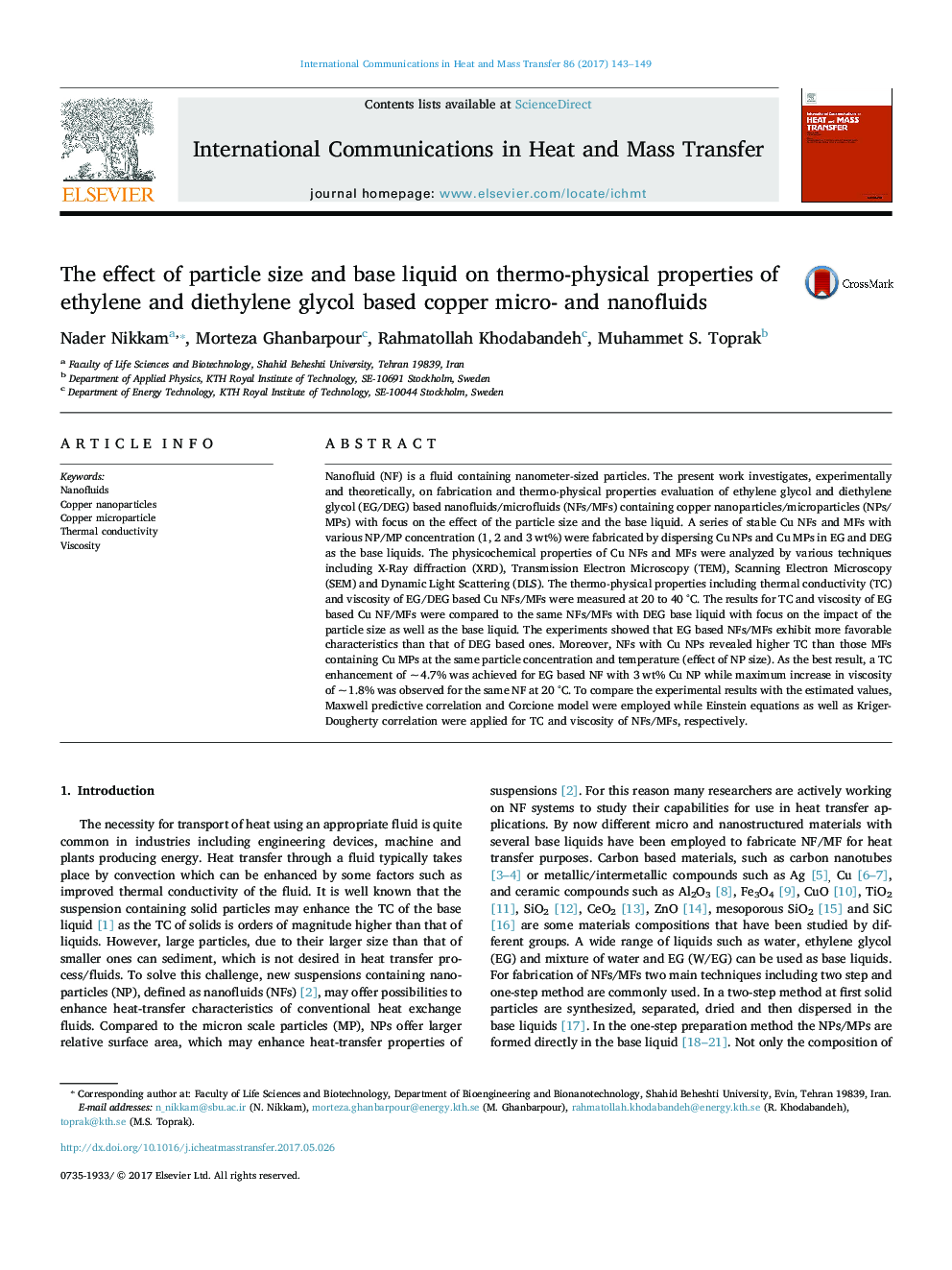| کد مقاله | کد نشریه | سال انتشار | مقاله انگلیسی | نسخه تمام متن |
|---|---|---|---|---|
| 4992859 | 1457468 | 2017 | 7 صفحه PDF | دانلود رایگان |
عنوان انگلیسی مقاله ISI
The effect of particle size and base liquid on thermo-physical properties of ethylene and diethylene glycol based copper micro- and nanofluids
ترجمه فارسی عنوان
اثر اندازه ذرات و مایع پایه بر خواص ترموفیزیکی میکرو و نانوسیم های مس بر پایه اتیلن و دی اتیل گلیکول
دانلود مقاله + سفارش ترجمه
دانلود مقاله ISI انگلیسی
رایگان برای ایرانیان
کلمات کلیدی
نانوفیلد ها، نانوذرات مس، ریزدانه مس هدایت حرارتی، ویسکوزیته،
موضوعات مرتبط
مهندسی و علوم پایه
مهندسی شیمی
جریان سیال و فرایندهای انتقال
چکیده انگلیسی
Nanofluid (NF) is a fluid containing nanometer-sized particles. The present work investigates, experimentally and theoretically, on fabrication and thermo-physical properties evaluation of ethylene glycol and diethylene glycol (EG/DEG) based nanofluids/microfluids (NFs/MFs) containing copper nanoparticles/microparticles (NPs/MPs) with focus on the effect of the particle size and the base liquid. A series of stable Cu NFs and MFs with various NP/MP concentration (1, 2 and 3 wt%) were fabricated by dispersing Cu NPs and Cu MPs in EG and DEG as the base liquids. The physicochemical properties of Cu NFs and MFs were analyzed by various techniques including X-Ray diffraction (XRD), Transmission Electron Microscopy (TEM), Scanning Electron Microscopy (SEM) and Dynamic Light Scattering (DLS). The thermo-physical properties including thermal conductivity (TC) and viscosity of EG/DEG based Cu NFs/MFs were measured at 20 to 40 °C. The results for TC and viscosity of EG based Cu NF/MFs were compared to the same NFs/MFs with DEG base liquid with focus on the impact of the particle size as well as the base liquid. The experiments showed that EG based NFs/MFs exhibit more favorable characteristics than that of DEG based ones. Moreover, NFs with Cu NPs revealed higher TC than those MFs containing Cu MPs at the same particle concentration and temperature (effect of NP size). As the best result, a TC enhancement of ~ 4.7% was achieved for EG based NF with 3 wt% Cu NP while maximum increase in viscosity of ~ 1.8% was observed for the same NF at 20 °C. To compare the experimental results with the estimated values, Maxwell predictive correlation and Corcione model were employed while Einstein equations as well as Kriger-Dougherty correlation were applied for TC and viscosity of NFs/MFs, respectively.
ناشر
Database: Elsevier - ScienceDirect (ساینس دایرکت)
Journal: International Communications in Heat and Mass Transfer - Volume 86, August 2017, Pages 143-149
Journal: International Communications in Heat and Mass Transfer - Volume 86, August 2017, Pages 143-149
نویسندگان
Nader Nikkam, Morteza Ghanbarpour, Rahmatollah Khodabandeh, Muhammet S. Toprak,
